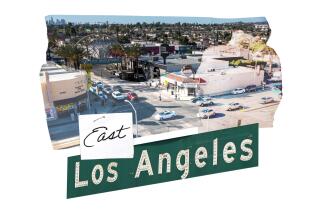PERSPECTIVE ON THE INNER CITY : Back to Basics on Enterprise Zones : The Clinton Administration has turned a good idea into a half-baked recipe for failure.
President Clinton’s recently announced “empowerment zones” amount to half-measures, which are fine in cooking but a recipe for failure in public policy. Even though these zones are at the heart of his urban agenda and the President surely wants to do something that works, his plan fails to challenge the built-in bureaucratic and political hurdles that prevent success. The President must take on the obstacles of head-counting and logrolling mandated by Congress. For now, this urban agenda seems born not of government reinvented but of Warren Harding reincarnated.
Empowerment zones are the latest version of the federal enterprise zones championed by former HUD Secretary Jack Kemp but never enacted in the Bush Administration. The idea is that, since our worst inner cities are not generating business-tax revenue, we can give major tax breaks to businesses setting up in those areas at no cost to the government. Businesses then get a toehold in the inner city and grow and employ local residents. When the tax benefits expire, in five or 10 years, we should find a thriving, tax-paying economy in our former economic wastelands.
To make this concept work, you must give a tax break clear enough and big enough to motivate someone to start a business he or she would not have started, or to move a business to the inner city from another location, preferably another country. This idea has been tried successfully abroad in what are called “tax holidays,” but it has never been tried here--and it is not being tried in the program President Clinton has sent to Capitol Hill.
The Clinton plan is for competitive selection of 100 “enterprise communities” throughout the country, each no larger than 20 square miles (less than one-eighth of Los Angeles’ inner city). Of those, 10 would be designated as “empowerment” zones, with somewhat better benefits. Five of these would be in major inner cities.
The maximum tax incentives in the five big cities’ empowerment zones will be availability of some tax-exempt development bonds, a new kind of IRA for local residents, some better tax treatment of capital investments and some wage credits for new employees in a few of the zones. The wage credits are to be subject to “mid-course corrections” if they later appear too expensive. A handful of existing government spending programs are also supposed to start focusing on the zones.
This is thin gruel for our poorest areas. No one establishes a new business or moves a business from another country to a U.S. inner city to take advantage of “inducements” like these.
This experiment in motivating the private sector is dead on arrival, not because enterprise zones are economically or conceptually wrong, but because hidebound statutory rules on calculating costs and old-fashioned congressional politics stand firmly in the way. The congressional “scoring” of the cost of an enterprise zone is required by law to consider every dollar not paid to the IRS because of a tax benefit to be treated as if it were a dollar spent by the government. This means that a successful zone, with plenty of thriving businesses taking up residence in the inner city and employing thousands, will be considered an enormous expenditure by the government. Never mind the fact that the government gets almost no revenue from the zone now, and will get full revenue from the newly booming area when the benefits expire.
In short, the method of calculating “costs” of an enterprise zone contradicts its theory and purpose, dooming any significant and successful effort by finding government expenditures where none exist. The more it succeeds, the more prohibitive is its artificial “cost.”
Add to the “cost” per zone, as calculated in Congress, the traditional political need to put zones in as many congressional districts as possible. Last year, Congress passed a law that proposed a mere 50 zones--more than enough to cripple the program with only meager benefits in each zone. Now we get a proposal for 100 zones, to be selected later in a time-consuming site competition, so no one knows now in whose district they will go. This is government of the oldest school--a little bit for everybody.
The problem is that enterprise zones are not less successful when tried with lesser benefits; they do not work at all. Until benefits reach a significant level, there will be no new investment response whatsoever. All you will see is the small geographic area set aside for the zone playing host to businesses sucked out of the surrounding neighborhoods by the chance to save a few bucks. A true exercise in “beggar thy neighbor.”
The President must confront these issues to make the zones work. We have to try dramatic benefits, like a waiver of all corporate taxes and a 15% investment-tax credit for businesses that locate in and hire from the inner city. Do it for five years and do it only in our five most depressed cities. Attack the inappropriate “scoring” system, which finds costs where there are none, by changing the law. Have the courage to avoid using these zones as a sop to every member of Congress. Without these reinventions, an idea whose time is now is certain to be perceived as a failed experiment, and we who are devoted to the inner city will lose a lever that would multiply our success.


